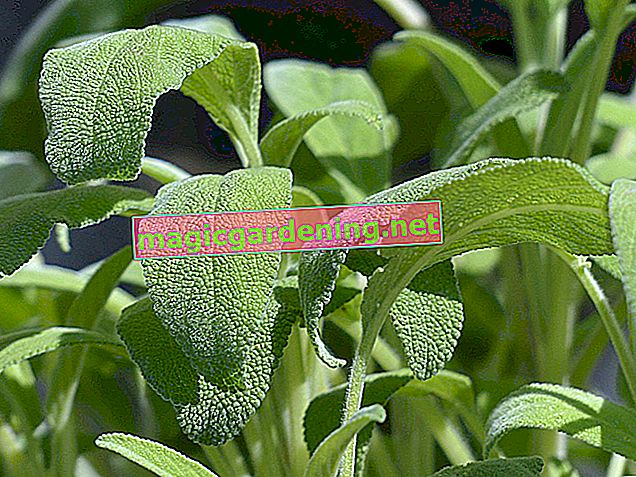
Use fresh sage imaginatively - creative tips
In the professional care of sage, harvest and regular cutting go hand in hand. Thus, during the season, the question of the best possible use of excess harvest and clippings arises repeatedly. Thanks to its intense aroma, fresh sage can only be used sparingly as a seasoning for dishes. Let the following suggestions for imaginative use inspire you:
- Homemade throat sweets made from 8 grams of sage, 100 grams of sugar and 35 milliliters of water
- Soothing sage syrup made from 80 grams of leaves, 1 liter of water and 500 grams of sugar
- Refreshing sage jelly made from 10 fresh leaves, 1 liter of apple juice and 1 kilogram of preserving sugar
- Spicy sage vinegar made from 5 branches of sage, 300 milliliters of rosé wine, 100 milliliters of water and vinegar essence
also read
- Declare war on lice on sage with home remedies - this is how it works
- Sow sage on the windowsill and in the bed - this is how it works
- Is Sage Poisonous?
Try the sage liqueur, because here you use 2 handfuls of fresh sage leaves in a witty way. Simply add it to 750 milliliters of raspberry brandy and let it steep for 1 week. Bring the sugar to the boil with water and allow to cool. Now pour the sage-raspberry spirit mix through a fine sieve into the sugar-water and stir well.
Use dried sage excellently - this is how it works
Once sage has dried, you can calmly think about its ideal use. Compared to freshly harvested leaves, dry goods can be kept for 12 months or more. Help yourself from the substantial herbal supply to use it as follows:
- To relieve coughs and runny nose in the inhaler
- Spread out in the house, bunches of sage drive away annoying insects
- Smoke fragrant smokes on the glowing coals of a fire bowl
Long before sage was used as a culinary herb, it was considered a natural remedy for a wide variety of ailments. The dried leaves, soaked in warm water, serve as an invigorating foot bath. If there are no fresh sage leaves available in winter, the dried herbs make a warming cup of tea. On the other hand, long-term use in high doses is not recommended due to the toxic thujone it contains.
Tips & Tricks
Essential oils tend to migrate into certain plastics. It is therefore not advisable to store fresh or dried sage leaves in containers made of PVC or polyethylene. Screw jars or jute bags are more suitable for this purpose.
GTH








